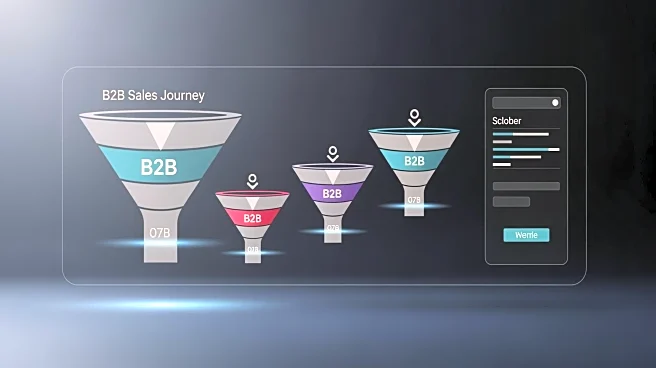What's Happening?
B2B marketers are being encouraged to shift their approach from traditional data management to a more interconnected, network-based perspective. This change involves viewing data as a dynamic network of
relationships rather than isolated data points. The current practice often involves tracking easily measurable metrics, such as bounce rates or campaign performance, which may not provide a comprehensive understanding of customer behavior. Instead, marketers are advised to adopt graph-based analytics, which can model complex relationships and reveal patterns that traditional databases might miss. This approach can help marketers understand how different factors, such as product engagement or service response times, influence customer behavior and business outcomes.
Why It's Important?
The shift to a network view of data is significant for B2B marketers as it promises to enhance their ability to understand and predict customer behavior. By focusing on the connections between data points, marketers can uncover insights that are not apparent through traditional linear data analysis. This can lead to more effective marketing strategies, improved customer engagement, and potentially higher sales. Companies that adopt this approach may gain a competitive edge by being able to anticipate customer needs and tailor their offerings accordingly. The ability to map and analyze complex relationships can also facilitate better decision-making and resource allocation.
What's Next?
As B2B marketers begin to implement this network-based approach, they may need to invest in new tools and technologies that support graph-based analytics. Training and development will be crucial to ensure that marketing teams can effectively interpret and act on the insights generated. Additionally, organizations may need to reassess their data collection and management practices to ensure they are capturing the right information to support this new analytical framework. The transition may also prompt a broader reevaluation of marketing strategies and objectives, as companies seek to align their efforts with the insights gained from a network view of data.
Beyond the Headlines
The adoption of a network view in data analysis could have broader implications beyond marketing. It may influence how businesses approach customer relationship management, product development, and even organizational structure. By understanding the interconnectedness of various business elements, companies can foster a more holistic approach to growth and innovation. This shift may also encourage greater collaboration across departments, as insights from one area can inform strategies in another, leading to more integrated and cohesive business operations.











